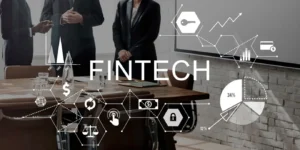Consumers and regulators alike are increasingly worried about the safety of financial institutions in this age of increasing cyber dangers. Banks must have strong cybersecurity safeguards in place, especially as they increasingly use digital technology. With all the choices out there, how can you pick the bank with the greatest cybersecurity? This article explores important aspects to consider, features well-known institutions with strong security measures, and offers advice on finding a trustworthy bank.
The Importance of Cybersecurity in Banking
It is crucial to grasp the significance of cybersecurity in the banking industry before delving into which bank has the greatest cybersecurity. Because they deal with so much sensitive personal and financial data, fraudsters target financial institutions. Successful attacks can result in:
- Financial Losses: Both for banks and their customers.
- Identity Theft: Identity fraud may occur when people’s personal details are compromised.
- Reputational Damage: Breach can damage consumer trust, which is crucial in the financial sector.
- Regulatory Penalties: Serious fines are levied for failing to adhere to security requirements.
In light of these concerns, financial institutions have an incentive to establish and uphold stringent cybersecurity protocols.
Key Factors in Evaluating Bank Cybersecurity
There are a number of important criteria to consider when deciding which bank has the greatest cybersecurity:
1. Security Infrastructure
The infrastructure of a bank is the foundation of its cybersecurity. Protections like intrusion detection systems (IDS), data encryption techniques, and firewalls fall under this category. Additionally, a strong security system must to incorporate:
- Multi-Factor Authentication (MFA): Using MFA, or multi-factor authentication, in addition to passwords increases security.
- Regular Software Updates: Updating software on a regular basis makes sure that systems are prepared to deal with new threats.
- Threat Intelligence Tools: Banks can keep one step ahead of new cyber dangers with the help of threat intelligence tools.
2. Regulatory Compliance
The Payment Card Industry Data Security Standard (PCI DSS) and the Gramm-Leach-Bliley Act (GLBA) are two examples of important industry standards and laws that must be followed. In order to prove they are following these rules, banks need undertake audits on a regular basis.
3. Incident Response Plans
In order to limit the impact of a breach, it is essential to have a well defined plan for responding to incidents. Cybersecurity event detection, response, and recovery procedures should be detailed in this strategy.
4. Employee Training and Awareness
A major contributor to security breaches is generally human mistake. Employees may better grasp the significance of cybersecurity and stay up-to-date on current risks like phishing scams with the support of regular training sessions.
5. Customer Engagement
Banks that take an active role in educating their clients about cybersecurity, providing alerts for suspicious conduct, and maintaining open lines of communication usually end up with more trusting consumers.
Leading Banks Known for Cybersecurity
Cybersecurity is a top priority for many financial institutions, but only a select handful have truly excelled in this field. Some of the most well-known financial institutions for their stringent safety protocols are:
1. JPMorgan Chase
JPMorgan Chase has spent over $600 million a year on cybersecurity to safeguard its operations. The financial institution uses cutting-edge artificial intelligence and machine learning tools to identify and counteract cyberattacks in real-time, and it has a staff of more than three thousand cybersecurity experts. Being a frontrunner in cybersecurity, they take a proactive approach by conducting frequent penetration tests and having a thorough incident response strategy.
2. U.S. Bank
A multi-layered security architecture incorporating numerous preventive measures has been established by Bank of the United States. Customers have the option to use multifactor authentication, and the bank uses advanced encryption technologies. Staying ahead of possible attacks is the specialized cybersecurity team’s top priority. They regularly monitor systems and do risk assessments. In addition, the bank places a premium on customer education, offering tools to clients so they may better comprehend and manage risk.
3. Wells Fargo
A thorough cybersecurity plan emphasizing prevention, detection, and reaction has been put into place by Wells Fargo. In order to fight cybercrime, the bank works with law enforcement and uses cutting-edge threat intelligence technologies. Identity theft protection services and real-time transaction notifications are only two of the many security measures offered by Wells Fargo to its clients.
4. Citibank
Citibank has made significant investments in technology and staff training to ensure its cybersecurity procedures are robust. The bank is now able to spot questionable activity in real time thanks to its real-time transaction monitoring and AI-driven fraud detection tools. Additionally, Citibank places a premium on openness, keeping consumers apprised of security processes and new dangers on a frequent basis.
5. Goldman Sachs
With an emphasis on risk assessment and threat intelligence, Goldman Sachs has taken a proactive stance towards cybersecurity. A specialized cybersecurity team and comprehensive employee training programs are two parts of the bank’s multi-pronged security architecture. Furthermore, Goldman Sachs has garnered praise for its comprehensive approach to cybersecurity, which incorporates security measures into all facets of the company’s operations.
What Makes a Bank Truly Secure?
Keep in mind that security is not a silver bullet, even though the aforementioned banks are cyber-adept. The whole security posture of a bank is affected by the following additional factors:
1. Continuous Improvement
Banks need to stay ahead of the curve when it comes to cybersecurity since the industry is always changing. Keeping a solid security posture requires a dedication to regular security assessments, staff training, and technological updates.
2. Collaboration with Experts
Banks may gain useful information and tools to improve their security procedures by collaborating with third-party companies and cybersecurity specialists. Regular audits and assessments conducted in conjunction with cybersecurity services can help uncover risks that might otherwise go unnoticed.
3. Customer-Centric Security Measures
Cybersecurity measures that put the client first also tend to be the best ones. Customers are more likely to have faith in banks that prioritize security while also making it easy for customers to utilize features like multi-factor authentication.
4. Transparency and Communication
Customers’ confidence may be greatly improved by transparent communication about cybersecurity initiatives. More safety in banking is often the result of banks that keep their consumers apprised of security updates, possible dangers, and preventative actions.
Conclusion
It is crucial for the banking sector to have strong cybersecurity measures in place, as cyber threats are always changing. Customers must keep themselves educated and alert even if major financial organizations have established stringent cybersecurity requirements, such as JPMorgan Chase, Bank of America, Wells Fargo, Citibank, and Goldman Sachs.
Protecting your money entails more than just picking a bank with robust cybersecurity protections. Improving your financial security is as simple as realizing the significance of security and taking personal responsibility for your safety by doing things like using strong passwords, activating two-factor authentication, and being aware of possible frauds.
Staying ahead of cybersecurity threats is crucial in a world where digital environments are always evolving. In order to secure your financial future, it is important to consider not just which bank has the greatest cybersecurity, but also what role you may take as a consumer. If you arm yourself with the correct information and take the necessary safety measures, you can confidently traverse the banking environment while safeguarding your personal and financial data.




